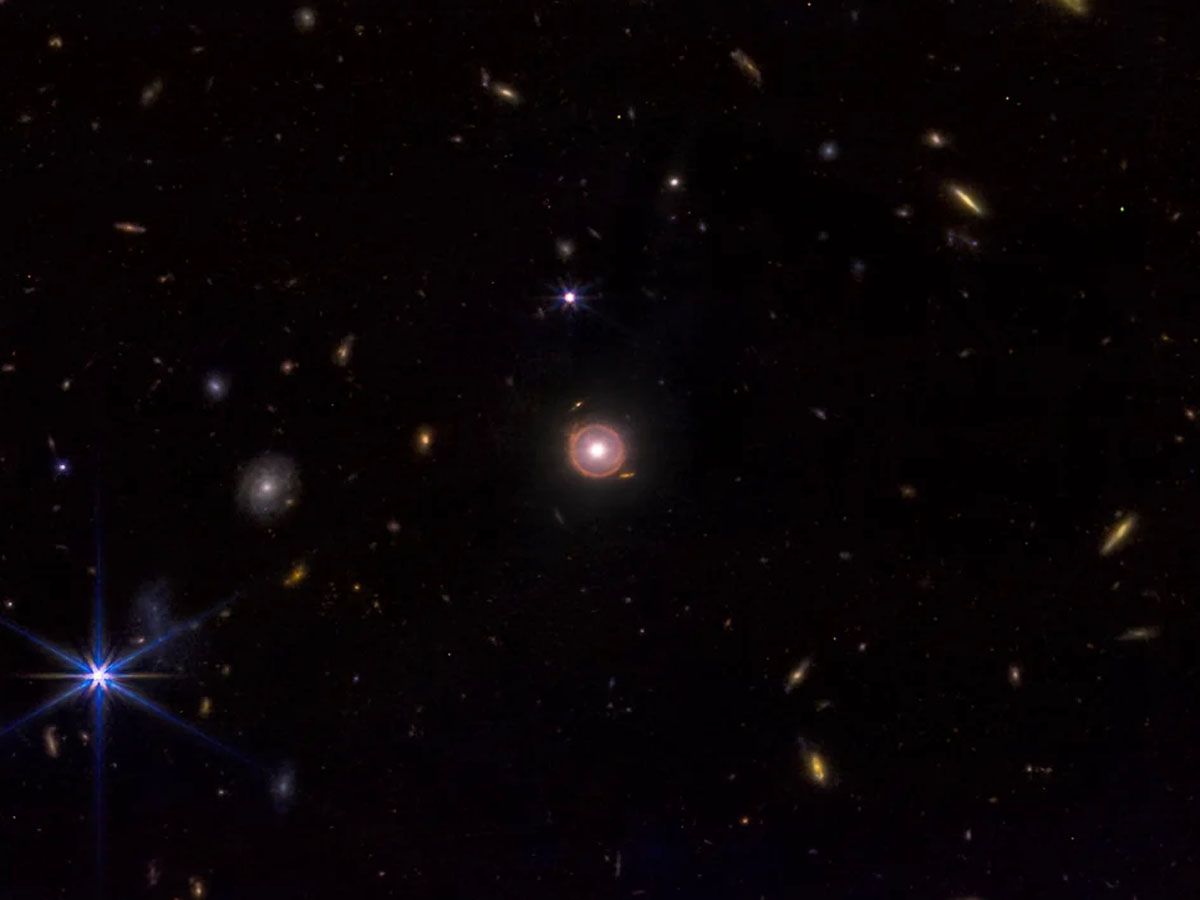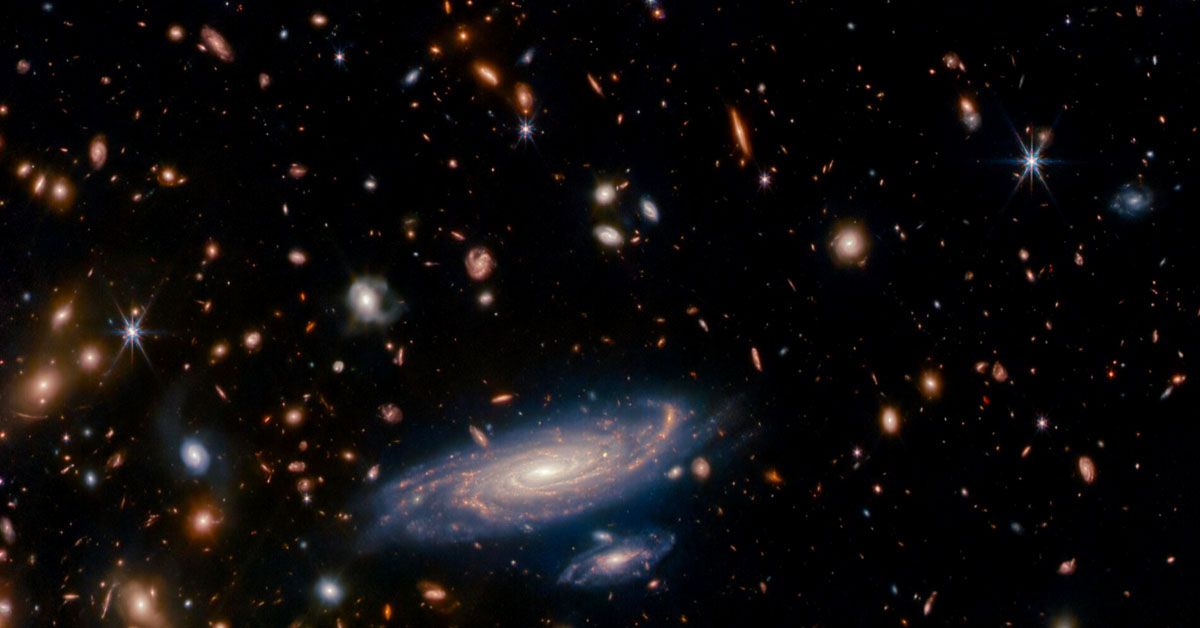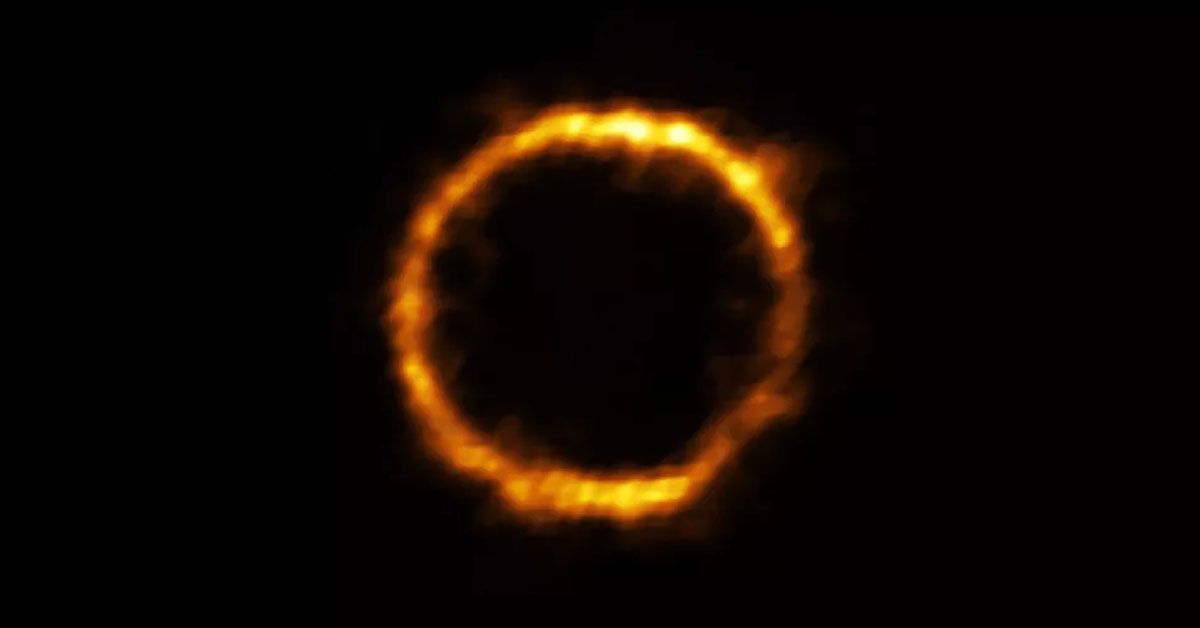The JWST has made a monumental discovery, a finding that pushes the boundaries of our understanding of the cosmos. Scientists detected complex organic molecules in a galaxy named SPT0418-47, which is over 12 billion light-years away.
This mind-bending discovery means we're looking at evidence of rich chemistry that existed when the universe was about 10% of its current age.
Overview of JWST's Discovery in Galaxy SPT0418-47
In the deep, boundless expanse of the cosmos, there is a star system known as SPT0418-47. This galaxy positioned an almost incomprehensible 12 billion light-years away from our planet, became the focus of a profound finding by the James Webb Space Telescope (JWST).
With its advanced observational equipment honed on this far-off galaxy, JWST unearthed a secret that reshaped our conception of the universe. Nestled within the confines of SPT0418-47, JWST found intricate organic molecules, particularly large structures called polycyclic aromatic hydrocarbons (PAHs).
The existence of these complex organic molecules in SPT0418-47 signifies more than just a random event. It's a celestial trace suggesting a captivating potential - the genesis of stars in the early universe.

Polycyclic aromatic hydrocarbons, or PAHs, are substantial molecules composed of carbon and hydrogen. While we regularly encounter these compounds on Earth in things like exhaust and char, their space-dwelling kin is involved in something more majestic.
In the cosmos, these molecules regulate the heating and cooling of gas within galaxies, thereby influencing star formation. Just like a thermostat maintains the temperature in your home, PAHs help maintain the perfect conditions for stars to form in the galaxy.
Hence, finding PAHs in such a distant galaxy like SPT0418-47 offers a fascinating glimpse into the process of star formation in the universe's early years.
The Significance of Complex Organic Molecules in the Early Universe
This detection underscores the existence of rich chemistry when the universe was just a tenth of its current age. The presence of these molecules suggests that the ingredients necessary for life as we understand it were around much earlier than we previously believed.
While the mere existence of PAHs is not definitive proof of life, these molecules play a significant role in the story of life's origins here on Earth, which in turn plays into our ongoing search for extraterrestrial life.

PAHs are considered to be the building blocks of life as they can lead to the formation of more complex organic matter. These complex molecules being present in the early universe might change how we view the possibility of life beyond our solar system.
The latest JWST findings not only prompt questions about the chemistry of the early universe and the potential for life, but they also offer insights into the rate of galaxy growth.
The unexpected distribution of PAHs in SPT0418-47 could impact our understanding of how quickly galaxies mature and evolve. More research is needed to explore these insights further and to untangle the complex web of early galaxy formation.
The Role of Gravitational Lensing in the Discovery
A crucial player in the grand stage of this discovery was not an object but a natural phenomenon known as gravitational lensing. Imagine trying to read a tiny label from afar, it's difficult, isn't it? But if you use a magnifying glass, the label suddenly becomes clear and readable.

Gravitational lensing acts like a cosmic magnifying glass, amplifying the view of distant objects in space. In the case of SPT0418-47, a closer galaxy to Earth served as this magnifying glass, bending and amplifying the light from the more distant galaxy.
Examination of the Challenges Faced by the Mid-Infrared Spectrometer
The James Webb Space Telescope (JWST), in its quest to unravel the cosmos' mysteries, relies heavily on its sophisticated tools. One of these essential instruments is the mid-infrared spectrometer.
In its monumental task of examining the cosmos, the mid-infrared spectrometer has encountered several hurdles. The device isn't gathering as much information as scientists intended, with two of its channels degrading.

Currently, it faces difficulties that could result in us losing up to 50% of the data, akin to viewing a photograph with half the pixels missing. The true picture of the cosmos might be much more vibrant and detailed than we currently perceive.
The cause of the spectrometer's underperformance is under investigation. It's like a puzzle that researchers are eager to solve, as it plays a crucial role in studying galaxies like SPT0418-47.
Galaxy Formation and Cosmic Chemistry
This significant discovery in SPT0418-47 contributes greatly to our comprehension of the universe's infancy. The presence of complex organic molecules in such a distant galaxy changes our understanding of chemical processes at play in the early universe.

The findings indicate that even in the universe's relative youth, chemistry as complex as the formation of PAHs was possible. It gives us a new perspective on the processes of galaxy formation and the chemical ingredients that might be available during these early stages.
Sources: nature.com













